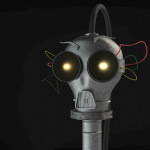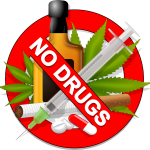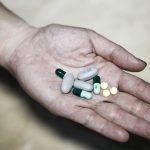 BigPharma is busily creating poisons and antidotes, and making big bucks on both. The latest is Ingrezza, an antidote for tardive dyskinesia, caused by antipsychotic medications. Tardive dyskinesia causes uncontrollable motions of face and body such as sticking out the tongue, waving the arms, moving the lips and so on. Often it’s permanent. One of the problems with Ingrezza is “somnolence” so it can put you to sleep and you might snore, but hopefully your arms will stop waving and your mouth will stop moving. With lots of research, BigPharma will soon have some kind of speed-type stuff to handle that sleepy side-effect stuff. And a 30-count bottle of 40mg Ingrezza tablets will cost you – or the taxpayers if you have some kind of universal health coverage – about $5,275.
BigPharma is busily creating poisons and antidotes, and making big bucks on both. The latest is Ingrezza, an antidote for tardive dyskinesia, caused by antipsychotic medications. Tardive dyskinesia causes uncontrollable motions of face and body such as sticking out the tongue, waving the arms, moving the lips and so on. Often it’s permanent. One of the problems with Ingrezza is “somnolence” so it can put you to sleep and you might snore, but hopefully your arms will stop waving and your mouth will stop moving. With lots of research, BigPharma will soon have some kind of speed-type stuff to handle that sleepy side-effect stuff. And a 30-count bottle of 40mg Ingrezza tablets will cost you – or the taxpayers if you have some kind of universal health coverage – about $5,275.
Other examples of the poison/antidote paradigm are all the street drugs – which were all invented by BigPharma – and now with medication assisted treatment, addicts get off the illegal street drug poisons and get onto the prescription medication antidotes like methadone, which are really actually poisons themselves, but at least they are billable under Medicaid and insurance and BigPharma can profit from them unlike the street drugs they invented but can no longer monetize.
But as the rehab people can tell you, methadone is an opioid which is actually harder to kick than heroin, as it takes longer to metabolize. Luckily, the psychiatrists have already decreed that addiction is a chronic disease, just exactly like diabetes, for example, and so lifelong medication assisted treatment is prescribed. So there’s little danger of addicts, or patients as they are now called, getting off the stuff for good, unless they die, and BigPharma has a drug to prevent that.
Somewhere along the way, when the poisons/antidotes/poisons get too much for the body, BigPharma has a real antidote called Naloxone or Narcan that shuts off the effects of opioids temporarily and allows the addict/patient to begin breathing again. It doesn’t stop the addiction – which, as you will recall, is officially a lifelong disease – so poison antidote Narcan, poison, antidote, Narcan will likely continue until death of the addict/patient.
IMHO, BigPharma should be required to do amends on all the poisonous crap they have poured into the public bloodstream, by funding drug rehab centers around the country that have as a product a person stably off all drugs. In addition, Congress could implement this 12-step program to get America off drugs. Maybe then we could get back to a real life where drugs are only for real diseases.







Recent Comments